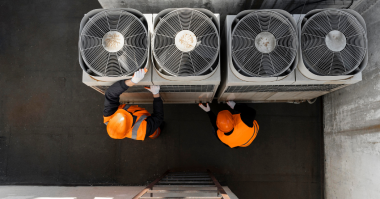Author: Bryan Christiansen, Founder & CEO, Limble CMMS
Maintenance crews know just how much wear and tear pumps undergo, especially in harsh conditions. Keeping a plant or facility up and running is a constant battle with the elements, along with corrosion, friction, vibrations and many other factors that can cause equipment breakdowns.
However, any business that aims to remain profitable and have a good safety record, cannot afford to operate by avoiding maintenance operations until something breaks down. Routine maintenance schedules which let you anticipate and avoid potential problems are less costly and provide far better results than reactive maintenance.
Routine Maintenance Benefits
Conducting routine maintenance on pumps results in several major benefits which include enhanced safety, less downtime, and reduced fugitive emissions. Let’s take at each of these benefits.
Increased safety
The number one thing you can do to ensure the safety of your equipment and of your personnel is preventive maintenance performed by properly trained technicians.
When your workers operate machinery and other industrial equipment without proper training, there’s a higher chance of experiencing system failures and workplace injuries. By keeping your pumps working properly, preventive maintenance reduces the risk of an emergency and helps you avoid catastrophic consequences (like an explosion) that could result from a pump malfunction.
Minimized planned and unplanned downtime
With today’s condition monitoring methods for pumps, a lot of maintenance activities and monitoring can be performed while they are inline and under pressure, meaning your team has fewer excuses not to carry out planned maintenance.
On top of that, planned maintenance helps you keep your equipment in peak operating conditions and reduces the chance of experiencing emergency shutdowns.
Reduced fugitive emissions
Pumps that aren’t operating in peak conditions can be a major cause of fugitive emissions. A study published a few years ago in Chemical Engineering magazine found that 60% of fugitive emissions in refineries can be traced back to leaking valves.
Preventive maintenance keeps your facility working in top shape, which in turn makes your projects kinder to the environment.
Leaks of any material can put the workers and the facility in danger and cause environmental damage. Fortunately, new standards and EPA actions are working to reduce the risk of leaks and fugitive emissions and ensure safety in the workplace.
Ways to create balanced maintenance schedules for pumps
A good schedule takes into account many different factors and strikes a balance between maintaining devices that need more care and wasting resources on unnecessary inspections.
Let’s discuss a few guidelines that will keep you on the right track.
Adjust the schedule to underlying conditions
While preventive maintenance is designed to be more cost-effective than breakdown maintenance, you can still go overboard with it and significantly diminish your ROI.
That is why we are focusing so much on the word “balanced”.
For example, high pressure and high flow pumps might require more maintenance and more regular inspections than your average pump. The same thing can happen if the equipment operates in harsh conditions that could affect how fast it wears and tears down.
Many maintenance managers will simply refer to OEM recommendations to schedule intervals for preventive maintenance. But you should take things a step further. When creating your maintenance schedule, don’t forget to review and adjust inspection intervals by taking into account different conditions that might have an impact on the speed of wear and tear of your equipment.
Take advantage of maintenance software
One of the main goals of any computerized maintenance management system is to help you that is based on good routine maintenance schedules.
The foundation of these programs is the equipment database, which is the key component for establishing any PM program.
After a month or two of using a maintenance software, you should have enough data to use different reports (such as your average time to repair, mean time between failures, parts used and their cost, preventive vs unplanned work, asset history…) that will help you to further optimize your routine maintenance schedules and tasks.
For example, by looking at asset history and unplanned work, you might notice that a certain pump caused several shutdowns and that the problem was always the same – bearing failure – and that the cause of bearing failures were lubricant failures and overheating. In such cases, the solution might be to increase the lubrication frequency or to look at how you can improve your lubrication management.
Incorporate employee driven procedures
The preventive and planned maintenance procedures for a pump should include OEM guidelines we mentioned earlier, but it is equally important that they also include recommendations from those employees who have hands-on experience working on those pumps.
As we always like to say, some things can only be noticed by the people that are turning the wrench.
To create a balanced routine maintenance schedule, make sure to take insight from multiple sources mentioned above.
Conclusion
With the help of modern maintenance software, the industry is transitioning towards proactive maintenance. In order to get the best bang for your buck, you need to have each pump operating at peak condition, warding off shutdowns and messy leaks.
By creating a balanced routine maintenance schedule, you’ll save on downtimes, decrease the environmental impacts of leaks and emissions, improve profitability, and ensure the safety of your employees.
 About the Author
About the Author
Bryan Christiansen is the founder and CEO at Limble CMMS. Limble is a modern, easy to use mobile CMMS software that takes the stress and chaos out of maintenance by helping managers organize, automate, and streamline their maintenance operations.





Comments